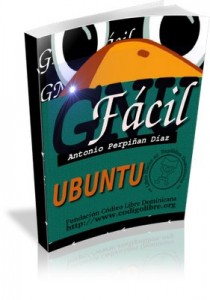El libro ‘GNU/Fácil’ la versión cuatro ha sido publicada, una guía completa para introducir a los usuarios nuevos a GNU/Linux y en particular a la distribución más usada del momento GNU/UBUNTU.
Antonio Perpiñan Díaz, reconocido en toda América Latina por sus aportes a la comunidad del Software Libre y por sus reconocidos libros (ya casi una docena), se siente orgulloso de la puesta en circulación digital de la cuarta versión de este libro que viene desarrollándose desde cuando UBUNTU estaba en la versión 5.10. El libro “GNU/Fácil” es una guía completa que debe servir de mucha ayuda para los usuarios nuevos al entorno gráfico de GNOME. Escrito con la intensión de educar y bajo condiciones pedagógicas que se pueden prestar para un primer semestre de nivel básico y medio de la educación formal de jóvenes en los cursos de 6, 7, 8 y los niveles de educación media.

Sin importar si el usuario introduciéndose al sistema operativo GNU/Ubuntu, el libro debe poder asistir para que la introducción sea conducida sin traGNU Facil UBUNTU V4ucida sin trastornos. El instructor que conduce la cátedra no tiene que ser un profesional informático, solo debe ser diestro con una computadora a nivel de usuario avanzado y el manual lo ayudará a completar el programa presentado en el. Este libro, desde sus inicios que solo se concentraba en el escritorio GNOME, y luego pasó a cubrir el sistema completo GNU, incluyendo la parte de mantenimiento Fundamental, Administrativa y de Redes, claro está a los niveles mas introductorio tomando en cuenta la audiencia a la cual el libro está dirigido. El libro de Antonio Perpiñan, persona dedicada a no solo a educar en asuntos informáticos, sino a la cultura general de los sistemas Unix y la cultura ética de los Hackers, el libro puede servir de introducción para los usuarios a los principios, teorías y practicas necesarias para empoderar a los potenciales nuevos usuarios y futuros administradores de sistemas.